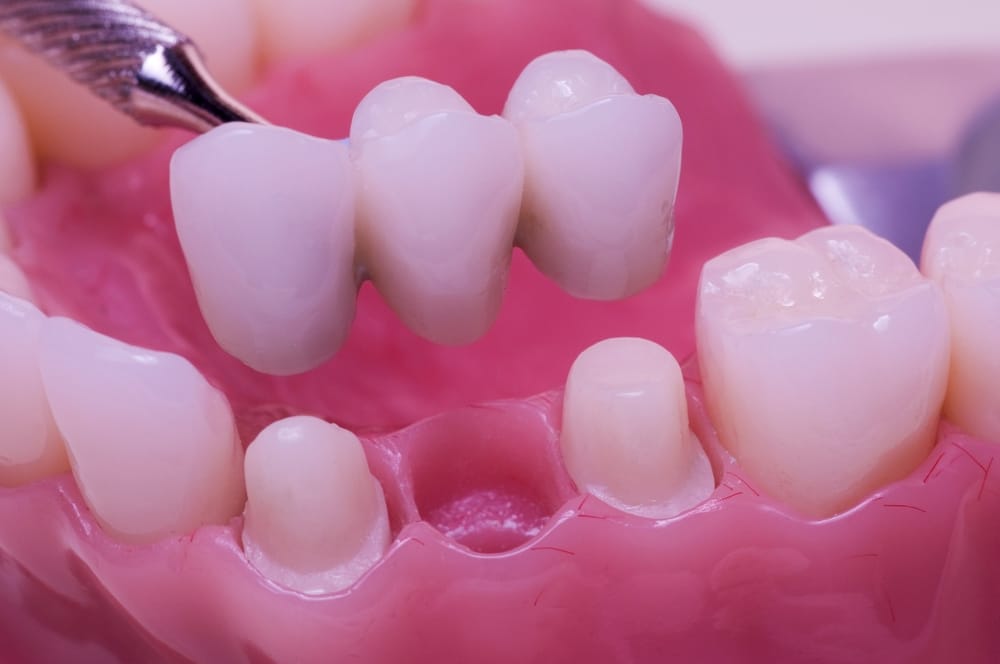Do you have missing teeth that make you conscious about your smile? Dental bridges are a great solution to restore your smile and boost your confidence. But what exactly are dental bridges, and how do they work? In this blog, we will help you understand the purpose of dental bridges and their role in restoring your smile. We will also discuss the different types of dental bridges available, such as traditional, cantilever, Maryland, and implant-supported bridges.
Additionally, we will compare dental bridges with dental implants to help you make an informed decision. Finally, we will talk about post-procedure care for dental bridges and how to extend their life. So, if you want to restore your smile and improve your oral health, keep reading!
Understanding Dental Bridges
Dental bridges are fixed dental restorations that bridge the gap created by missing teeth. They are supported by natural teeth or dental implants, providing a functional and aesthetic solution for those with a missing natural tooth. By preventing surrounding teeth from shifting, bridges help maintain proper jaw alignment. One of the advantages of dental bridges is that they can be customized to match the natural color, shape, and size of your teeth. Remember, proper oral hygiene is essential to ensure the longevity of these restorations.
Traditional Dental Bridge
In the case of a traditional dental bridge, dental crowns are placed on the abutment teeth, with the pontic tooth positioned in between. This type of bridge is particularly effective for filling the gap left by one or more missing teeth on both sides of the gap in the same mouth area. Traditional dental bridges offer secure and stable results that are natural-looking and long-lasting. The abutment teeth may need to be reshaped to ensure proper crown placement. Maintaining good oral hygiene practices, including regular brushing and flossing, is essential to uphold the bridge’s and surrounding teeth’ health.
Cantilever Dental Bridge
Cantilever dental bridges are an effective solution for cases with only one adjacent tooth next to the gap caused by a missing tooth. Unlike other bridges, cantilever bridges utilize the abutment tooth on the side to support and hold the pontic tooth in place. This makes them particularly suitable for replacing missing teeth towards the front of the mouth. Placing cantilever dental bridges does not require the preparation of the adjacent tooth on the opposite side of the gap, offering a less invasive option. Regular dental visits ensure cantilever dental bridges’ stability and proper functioning.
Maryland Dental Bridge
Maryland dental bridges, also called resin-bonded bridges, are composed of artificial teeth held in place by metal wings. These metal wings, located on just one side of the bridge, are bonded to the abutment teeth, providing stability and support for the bridge. Unlike traditional bridges, Maryland bridges do not require the reshaping of the abutment teeth, making them a conservative option. They commonly replace missing front teeth due to their natural appearance. To ensure the longevity of Maryland dental bridges, practicing proper oral hygiene, including regular flossing, is crucial to maintain the bridge’s and surrounding teeth’ health.
Implant-Supported Dental Bridge
Implant-supported dental bridges offer a stable and reliable solution for individuals with multiple missing teeth in a row. Using dental implants as the foundation, these bridges closely resemble natural teeth in function and appearance. The implants are surgically placed in the jawbone, acting as artificial tooth roots to provide the utmost stability for the bridge. Regular dental hygiene practices and routine dental visits are crucial for adequately caring for implant-supported dental bridges. With their ability to restore your smile and improve oral health, implant-supported dental bridges are an excellent choice for replacing missing teeth.
Dental Bridges Vs. Dental Implants
Dental bridges and dental implants are both effective solutions for replacing missing teeth. While dental bridges are fixed appliances, dental implants are surgically implanted artificial tooth roots. Dental bridges are more suitable for individuals missing one or a few teeth, whereas implants are ideal for missing teeth throughout the mouth. Implants offer the advantage of preserving the jawbone, preventing bone loss, and maintaining proper oral health. Both options have benefits and considerations, so it’s essential to consult your dentist to determine which option is best for you.
Pros and Cons of Dental Bridges
Dental bridges offer a solution for restoring missing teeth and enhancing the appearance of your smile. However, one drawback is the removal of healthy tooth enamel to make space for the bridge abutments. On the positive side, dental bridges can help maintain the natural shape of your face and prevent surrounding teeth from shifting. It’s important to note potential complications, such as tooth decay or gum disease if proper care is not taken to maintain healthy teeth. Dental bridges provide a fixed, non-removable option for missing teeth, improving chewing and speech abilities.
Post-Procedure Care for Dental Bridges
Maintaining good oral hygiene is crucial for the longevity of dental bridges. Regular brushing and flossing, including floss threaders or interproximal brushes, help keep the bridge and surrounding gums clean and free from plaque buildup. It is important to avoid chewing hard or sticky foods that could potentially damage the bridge or the natural teeth supporting it. Regular dental check-ups and cleanings are necessary for monitoring the health of the bridge and gums. If the bridge feels loose or uncomfortable, contacting the dentist for evaluation and possible adjustment is recommended. Additionally, avoiding habits like teeth grinding, nail-biting, or chewing on ice can minimize the risk of bridge damage.
Conclusion
In conclusion, dental bridges are a reliable and effective solution for restoring your smile and improving oral health. Whether you have a missing tooth or multiple missing teeth, dental bridges can provide a natural-looking and functional replacement. It’s essential to consult with your dentist to determine if dental bridges are the right choice for you based on your specific needs and oral health condition.
Once dental bridges are in place, practicing proper post-procedure care is crucial to longevity. This includes maintaining good oral hygiene, avoiding hard and sticky foods, and scheduling regular dental check-ups. By following these guidelines, you can maximize the lifespan of your dental bridges and enjoy a beautiful smile for years to come. Don’t let missing teeth limit your confidence and ability to eat comfortably – consider dental bridges a viable solution for restoring your smile.


 Meet Dr. Leffler
Meet Dr. Leffler
 Meet the Team
Meet the Team
 Dental Membership Plan
Dental Membership Plan
 Insurance Information
Insurance Information
 Patient Forms
Patient Forms
 Online Bill Pay
Online Bill Pay
 Your First Visit
Your First Visit





